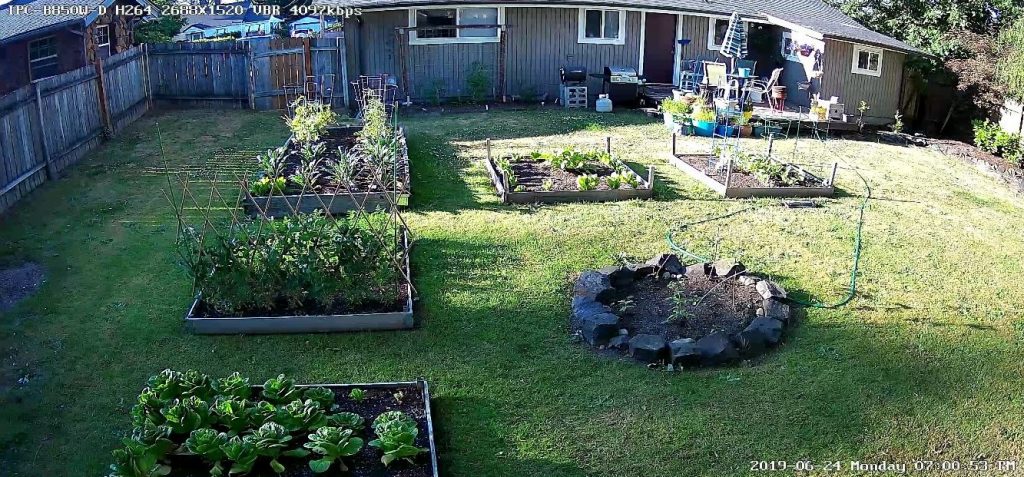
This review is for the Anpviz IPC-B850W-D 5MP@15FPS security camera w/ mic and Micro-SD card support.
Full disclosure: I purchased this camera and was later reimbursed for writing this review. However, I will do my best to offer a totally objective viewpoint on the pros and cons of this model.
Since I was hired to do installation and maintenance of a TVI DVR system at a local restaurant, I’d been wanting to set up a couple cameras around my home.
I’m not so worried about theft or break-ins like the restaurant is, but even in a mellow, low-stress area like ours recording a few key areas can still be helpful. For instance, we share a fence with a parking lot, so it gets hit by cars occasionally and we’d like to know who did it if we’re not home. Also, you never known when someone might take an Amazon delivery off your doorstep, as that is becoming common even in nice neighborhoods.
Even though I do installation professionally, I did not get the job because I’m a video security expert. I did networking for the restaurant and they asked me if I wanted to work on the security system. I virtually had no experience with CCTV setups before starting the job, so I dove into it head-first and have been learning as I go. It’s been a great experience.
As far as DVR/NVR technology, I’ve found that IP cameras better for features and quality, but the TVI cameras are a lot easier to wire. However, even though wiring RG59+BNC cables is easier than terminating cat6, the time savings is offset by the number of cameras I end up setting up, since they tend to be lower resolution.
Compared to the 1080p cameras I use with the restaurant’s TVI setup, the 5MP IP cameras I have are much more efficient. I was stunned by how much more detail there is, so if it’s recording an open area, I just set up one 5MP+ camera and use digital zoom to navigate, whereas I have to use several 1080p or 720p cameras to cover the same area at the restaurant because of their resolution. Even though a single IP camera might be more expensive than a TVI camera, overall the system has been cheaper, easier to set up, and less hassle to use.
While I use almost entirely Hikvision products (and clones) for the TVI CCTV system at work, I’ve decided to stay away the major name brands for IP cameras because the market is moving so quickly the newer up-and-comer companies are competing much harder and produce products with more features and better value.
Of the 5-6 IP cameras I’ve tried so far, I’ve liked Anpviz best and SV3C second-best. I’d like to try Morphxstar at some point, but would be happy sticking with Anpviz going forward as they have stunning picture quality and are built like tanks.
The Anpviz camera I already owned I had been very happy with. It’s an IPC-D350 that was an Amazon best seller, so I was excited to try another one from the same company. I have an IP camera from SV3C, too, the SV-B06POE-4MP-A. The main reasons I was excited to try the review camera were:
1) Value – Anpviz makes a great product at a very affordable price. The IPC-D350 was an ‘Amazon Recommended’ camera. The IPC-B850W-D hasn’t gotten as much attention, but it’s a very similar camera picture-wise with the added benefit of having a mic and a Micro-SD card slot, at pretty much exactly the same price. Seems like a good value to me!
2) Picture and recording quality – a camera that is inexpensive but has a poor picture or recording quality is a waste of money. My IPC-D350 has great picture quality and has allowed me to see detail from the front of the house to the street. I’ve only needed the single camera to be able to identify anyone who walks anywhere in the front yard. I’m happy I have something reliable I can use to decipher between the post carrier, family members, or Mormons when they come to knock on my door.
3) Build quality – I’ve had the IPC-B850W-D for more over a month, and the IPC-D350 for about 6 months. Both have been stable in all sorts of weather conditions. I haven’t had any issues with it stalling or rebooting over the 6+ months it’s been in use. The IPC-B850W-D has been similarly resilient. Subjectively, they don’t seem cheap like other similarly-priced cameras, using a fair amount of metal in their build instead of being entirely plastic like most others. My SV3C, for instance, is all plastic except the base. It’s a hard ABS plastic, but still just doesn’t seem as hearty as the Anpviz cameras I’ve tried.
4) Support – Anpviz support has been great, they’re responsive and kind, and have been able to walk me through any problems I’ve had in the past.
5) Features – Anpviz cameras use a stock firmware I’ve seen in cameras from other manufacturers in the same price range, but with a few additional settings here or there that make them stand out. Also, the option to downgrade the sensor resolution and increase the framerate does not come at a great loss – for instance, 5MP@15MPS is a good combination by default, most people would be happy with that. However, if you want to have full 24FPS recording, downgrading from 2592×1944 (5MP) to 2688×1520 will allow you record up to 25FPS without sacrificing much in the way of pixel density.
Comparitively, our Hikvision DS-7332-HGHI 32-channel DVR requires us to downgrade the stream from 1080P@12FPS to 720P@24FPS to get full-frame recording on any more than 8 cameras, so I was expecting a much larger sacrifice in quality!
Mounting: Mounting the camera on my shed and adjusting it was easy enough. There were three different points of adjustment – 1) A 360° swivel of the base, the part with screw holes that sits on the wall. 2) an up-down/left-right joint that is limited to 90° but can be swiveled any direction, and 3) the camera itself swivels 360°.
I tend to be a fan of ball-joint mounts for bullet cams when I’m first setting them up because of the ease of adjustment, but you can get the same range of motion with this number of joints, it just requires a little more work. The positive of NOT having a ball joint is they tend to wear out after a while and are more likely to become loose over time compared to discrete, range-restricted joints.

Picture quality: I’m not sure what the difference is between the IPC-D350 and the IPC-B850W-D in terms of the sensor technology, materials over the sensor, etc. but Subjectively the colors seem slightly more vibrant on the IPC-D350. It’s not something most people would notice, though, I don’t think. They look extremely similar. Both are similarly as sharp, and have essentially the same motion-recording sensitivity.
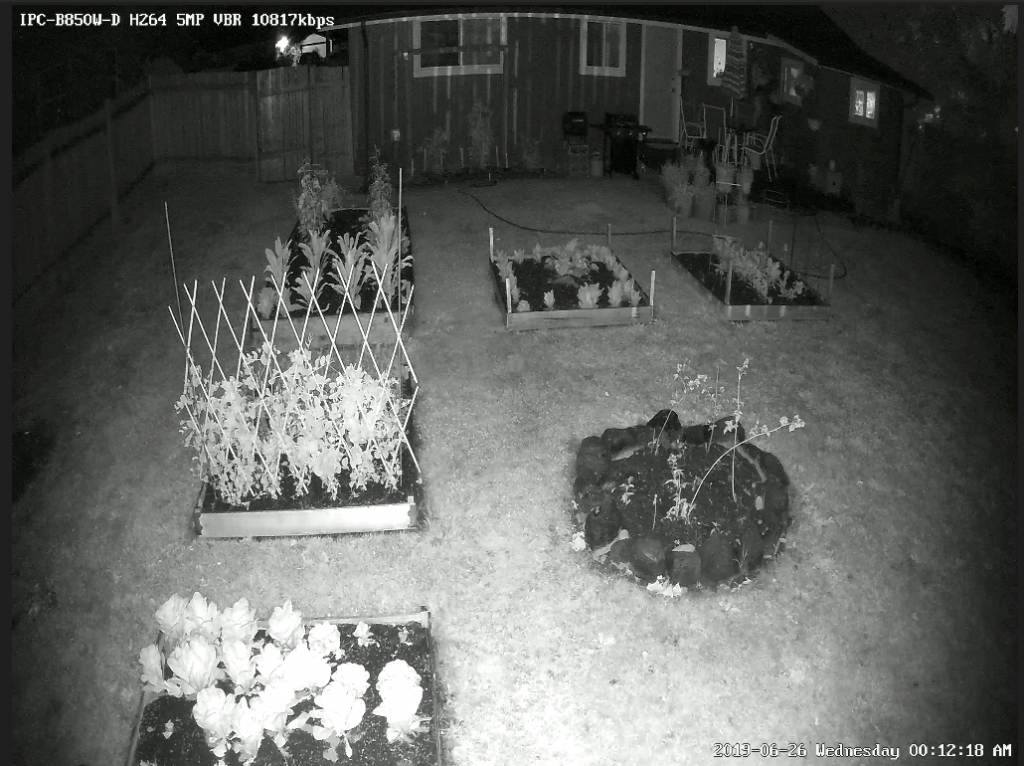
Night vision: The IPC-B850W-D night vision is a major improvement over the IPC-D350, which is the only thing I didn’t like about that camera. I can see a lot further using this camera, and there is great detail rather than just cloudy grey out approx 60+ ft. I think it might be the clearest night vision of the 3 cameras I have now, but it’s a close call between the IPC-B850W-D and my SV3C SV-B06POE-4MP-A, which also has great night vision.
This possum had no idea s/he was being taped:
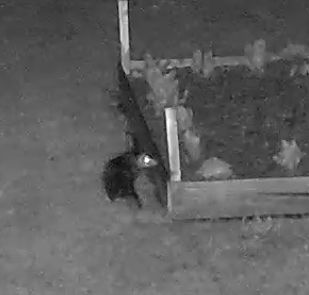
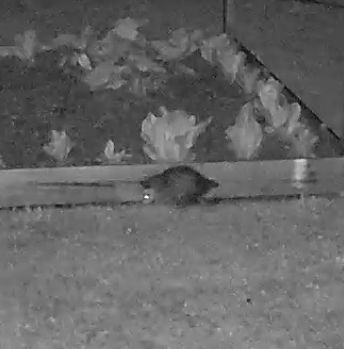
Recording support:
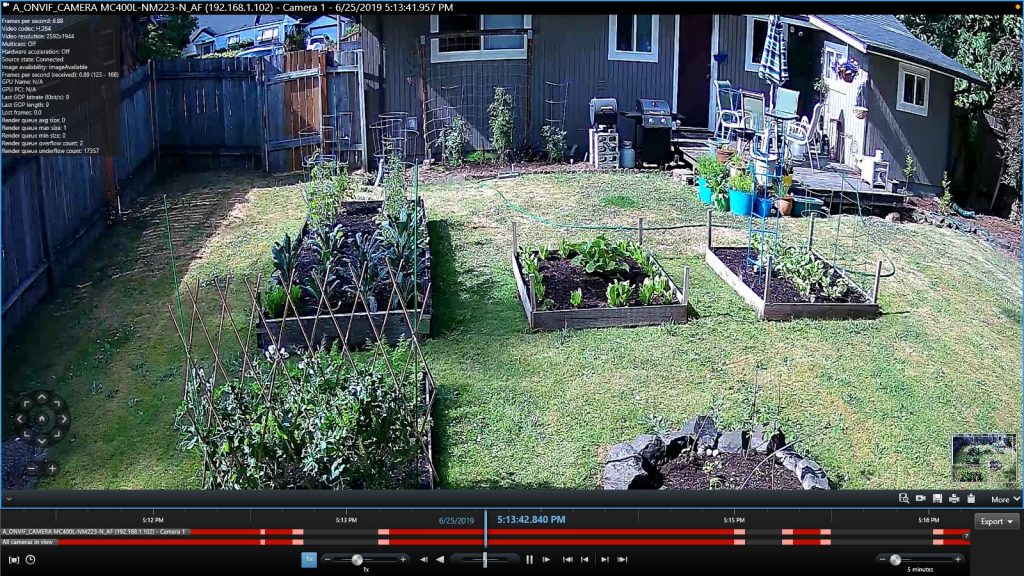
My recording platform is Milestone Xprotect Essential+ 2019R1, which is a true enterprise solution that runs on Windows 10 or Server 2012R2 and newer. While not in the directly supported list, the IPC-B850W-D camera was detected using ‘easy add’ in hardware management via ONVIF without issue. Main feed, sub feed, metadata feed, microphone outputs all detected and record without issue.
Interestingly, Milestone detects 5 input feeds to the camera, but I’m not sure what they’re used for. I’ve noticed Milestone detects input feeds on other cameras I’ve tested, as well. At some point, I would like to know what they do, if anything. It’s possible they’re just for ONVIF compatibility, I suppose (?).
I imagine the camera should work fine with other recording platforms such as Shinobi, Zone Minder, Blue Iris, iSpy, MotionEye, etc. but I did not go so far as to test the camera with any of these because I use Milestone (and am very happy with it). Chances are if your recording platform is compatible with ONVIF, though, the camera should work fine.
I do not have a commercial NVR to test the camera with, but it is advertized as being compatible with Hikvision through port 8000. I did test the Anpviz IPC-D350 IP camera with a Hikvision Turbo 1.0 DS-7332-HGHI hybrid DVR w/ firmware version 3.1.18 and it would record the feed, but a lot of features were mismatched because of the age of the DVR, and the fact that it uses dated firmware. I do not believe the DVR even supports ONVIF.
If you have an old hybrid DVR, this camera will work, but be prepared for some of the settings not to overlap properly. I know our DVR only supports maybe 2-3 IP camera models officially, but it will record the feed of most any Hikvision-compatible IP camera nonetheless. Additionally, viewing IP cameras from the IVMS-4500 phone app on an old hybrid DVR requires setting up separate devices for each IP camera, as they are not available in the main list along with the analog camera feeds. Just something to consider.
I’ve thought of setting up a Milestone record server and importing a TVI DVR such as the DS-7316HUI-K4 for a solution that would provide compatibility with TVI cameras, yet display all TVI and IP cameras on one page through the Milestone app, but that’s a project for another day.
From the configuration page there’s a recording option for MicroSD, USB (generic firmware option, probably non-functional), and NFS. I did not test a micro-SD card, so I cannot report on that. But I did try mounting an NFS share through my network. It was a tad quirky in that when I first configured the share it wouldn’t show that it was mounted until I logged out and back in, but it did seem to work just fine.
There is also an option to send clips to an FTP server, but it’s in the Network settings menu instead of under storage. There’s also an email for alerts, but unlike some other cameras I’ve seen, I don’t think you can email clips of video.
Intuitively, I’d think the easiest thing to use for storage would be the P2P option through Danale, a paid cloud storage service, but after having a look at their app’s ratings it looks like it might be more trouble than it’s worth. Therefore, if you want push notifications, you probably should set up the camera to send you an email and do some extensive testing of the motion detection sensitivity in order to avoid false positives.
IFTTT is worth checking out for push notifications, too! I’ve managed to rig it up to push notifications for work, as well as automate all sorts of things for work and home. If you’ve never heard of it, have a look, it’s amazing: https://ifttt.com
I think Microsoft has something similar called “flows” but I haven’t tried it yet. Hey, whatever works, right?
Browser support testing:
I noticed the IPC-B850W-D camera was compatible with a wide range of browsers. I tested it with the top 2 or 3 browsers on 3 different common operating systems, and they all seemed to perform great. This is a real step up from older cameras which would only work on Internet Explorer, given how many people use Mac or Linux (or even BSD or Illumos) for their desktop or laptop instead of Windows.
Live View and all feature/configuration pages were available in the following browsers:
Windows LTSC 1809 build 17763.557:
Chrome 75.0.3770.100 (Official Build) (64-bit)
Firefox 60.7.2esr (64-bit)
Internet Explorer 11.0.130 KB4503259
Ubuntu Linux 18.04.2 kernel 4.15.0-52-generic:
Chrome 75.0.3770.100 (Official Build) (64-bit)
Firefox 67.0.4 (64-bit)
MacOS Mojave 10.14.5 Darwin Kernel Version 18.6.0 root:xnu-4903.261.4~2/RELEASE_X86_64 x86_64:
Chrome Version 75.0.3770.100 (Official Build) (64-bit)
Firefox 60.7.0esr (64-bit)
Safari Version 12.1.1 (14607.2.6.1.1)
Here’s screenshots I took of the camera’s firmware webpage.
To blow up a picture, right-click and select “Open image in new tab”

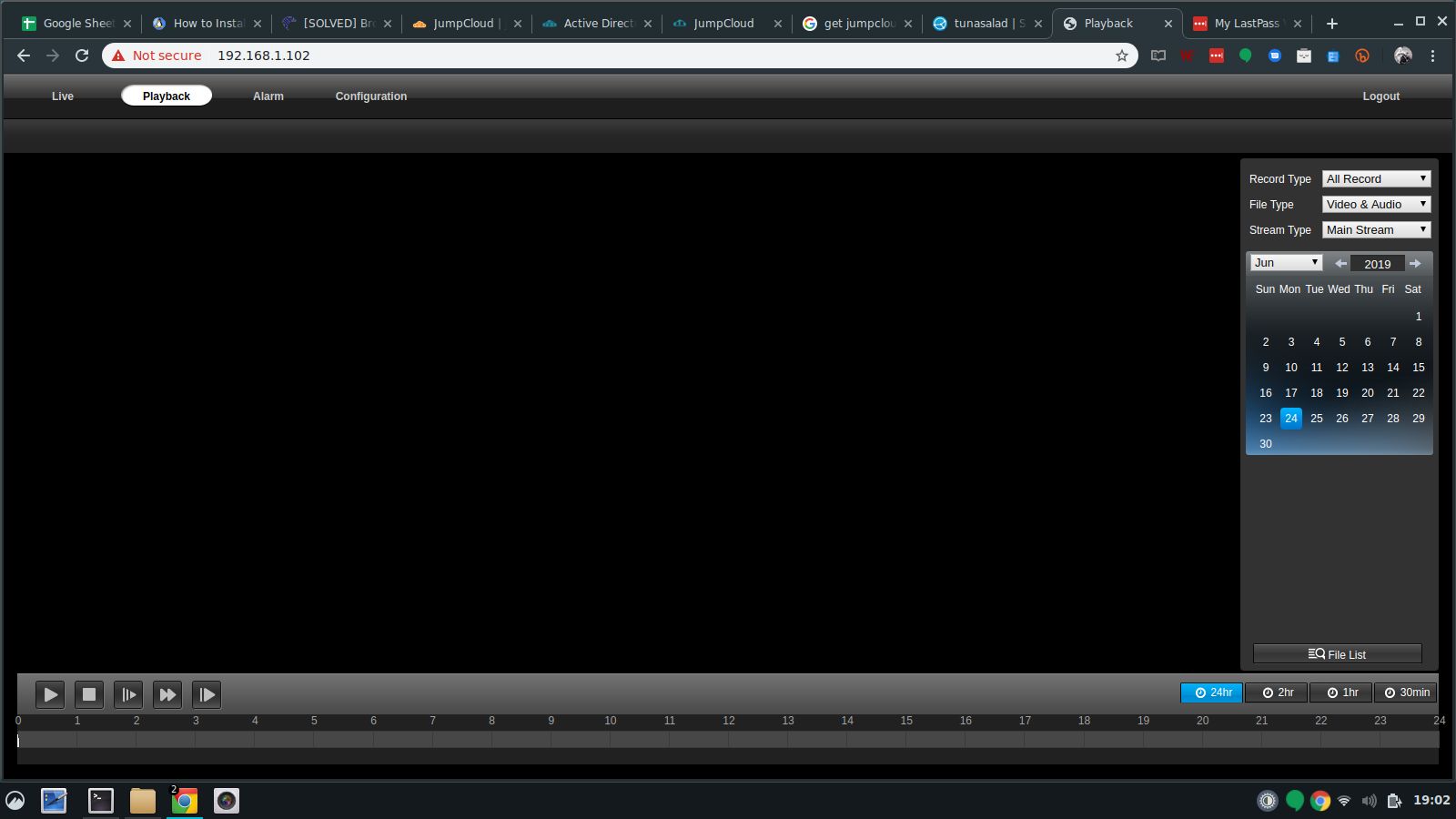
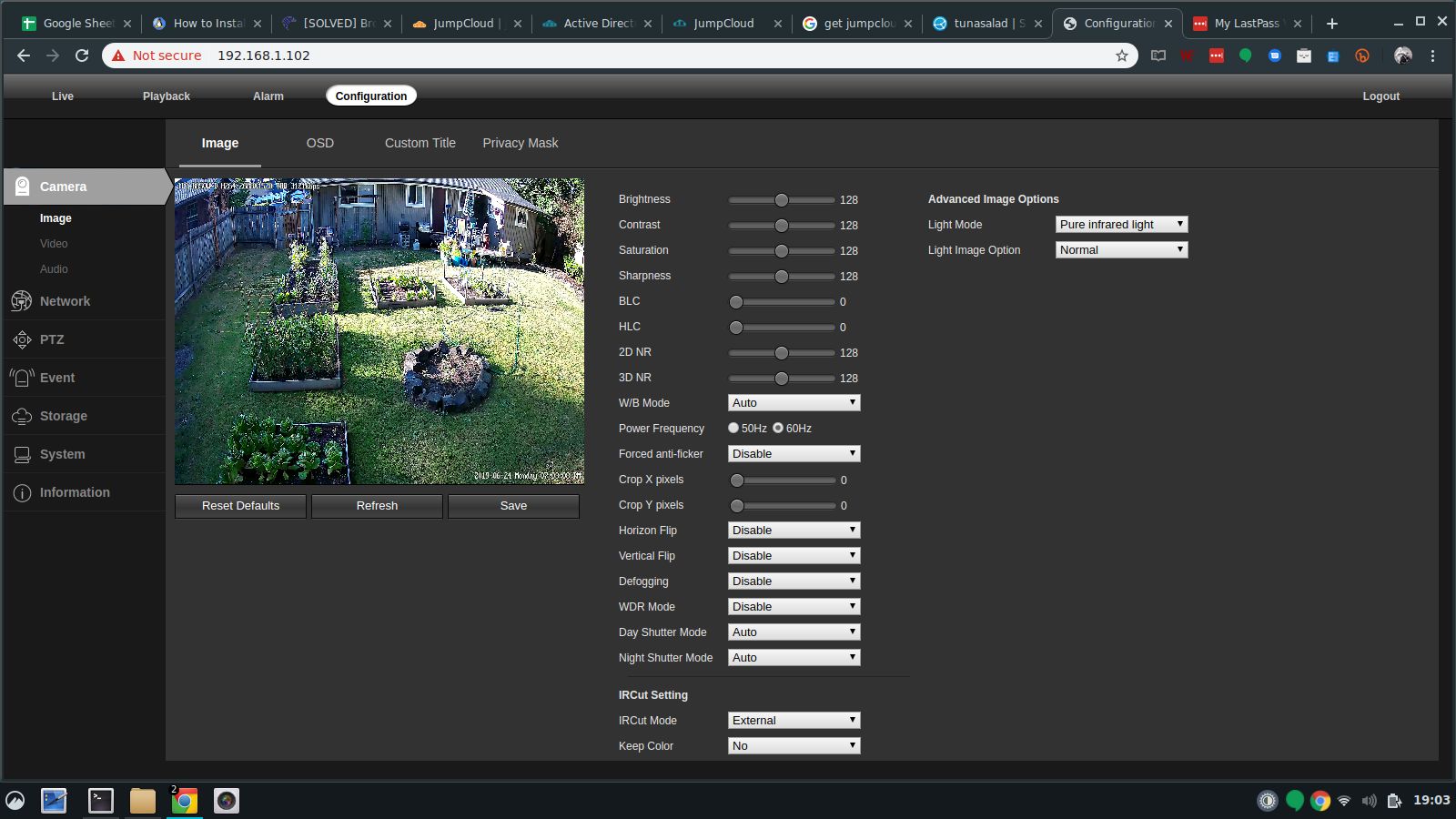
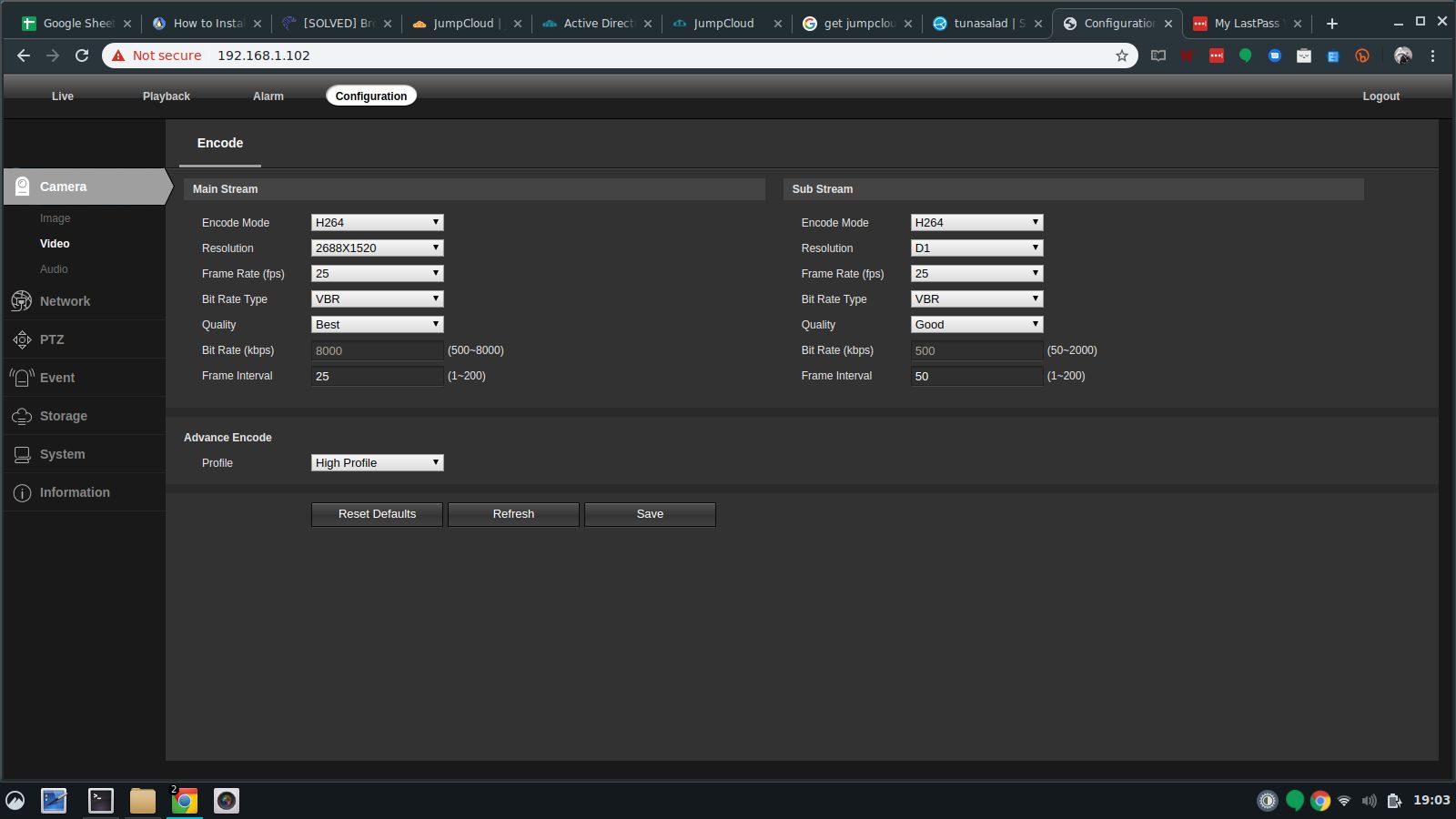

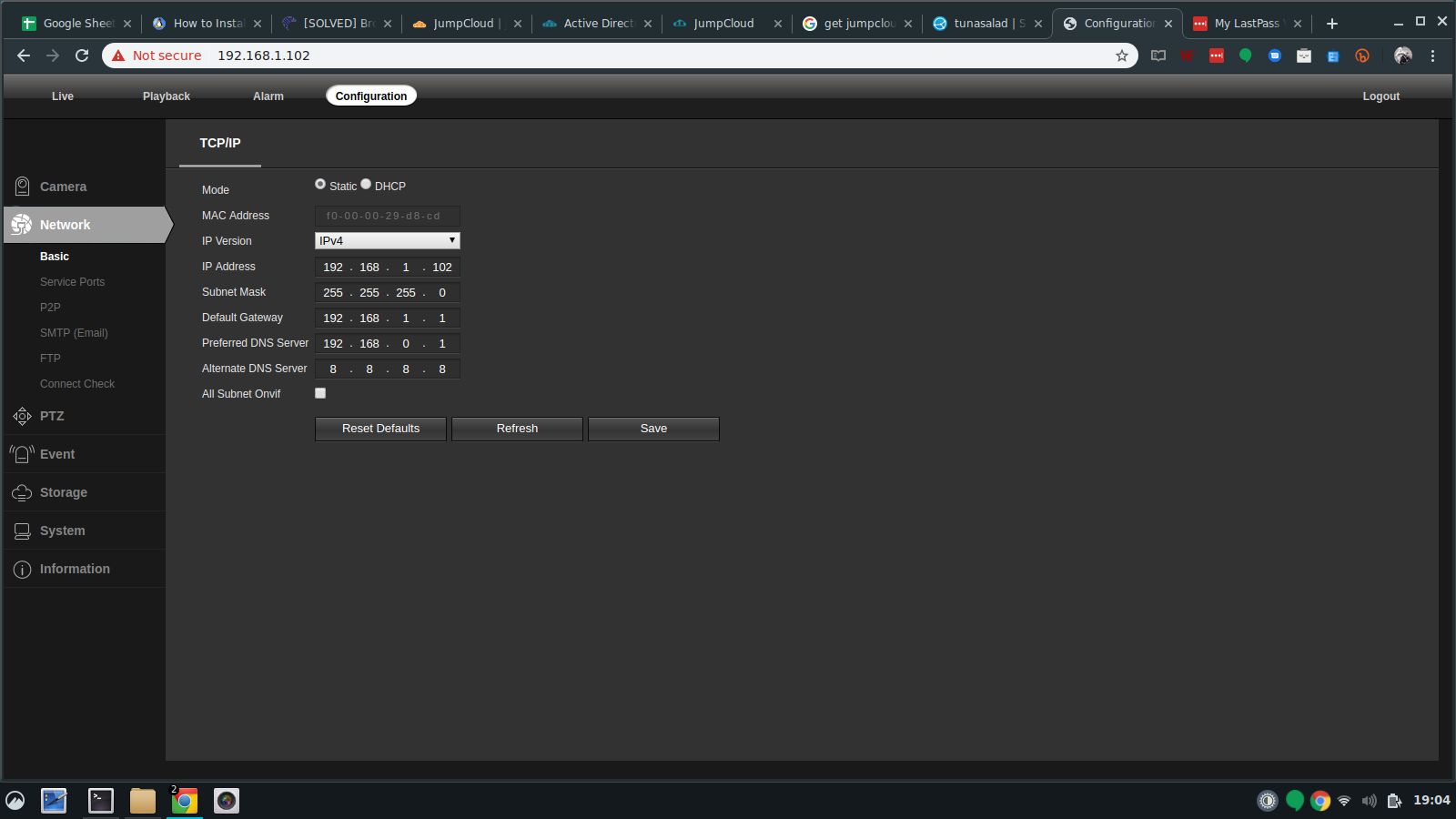
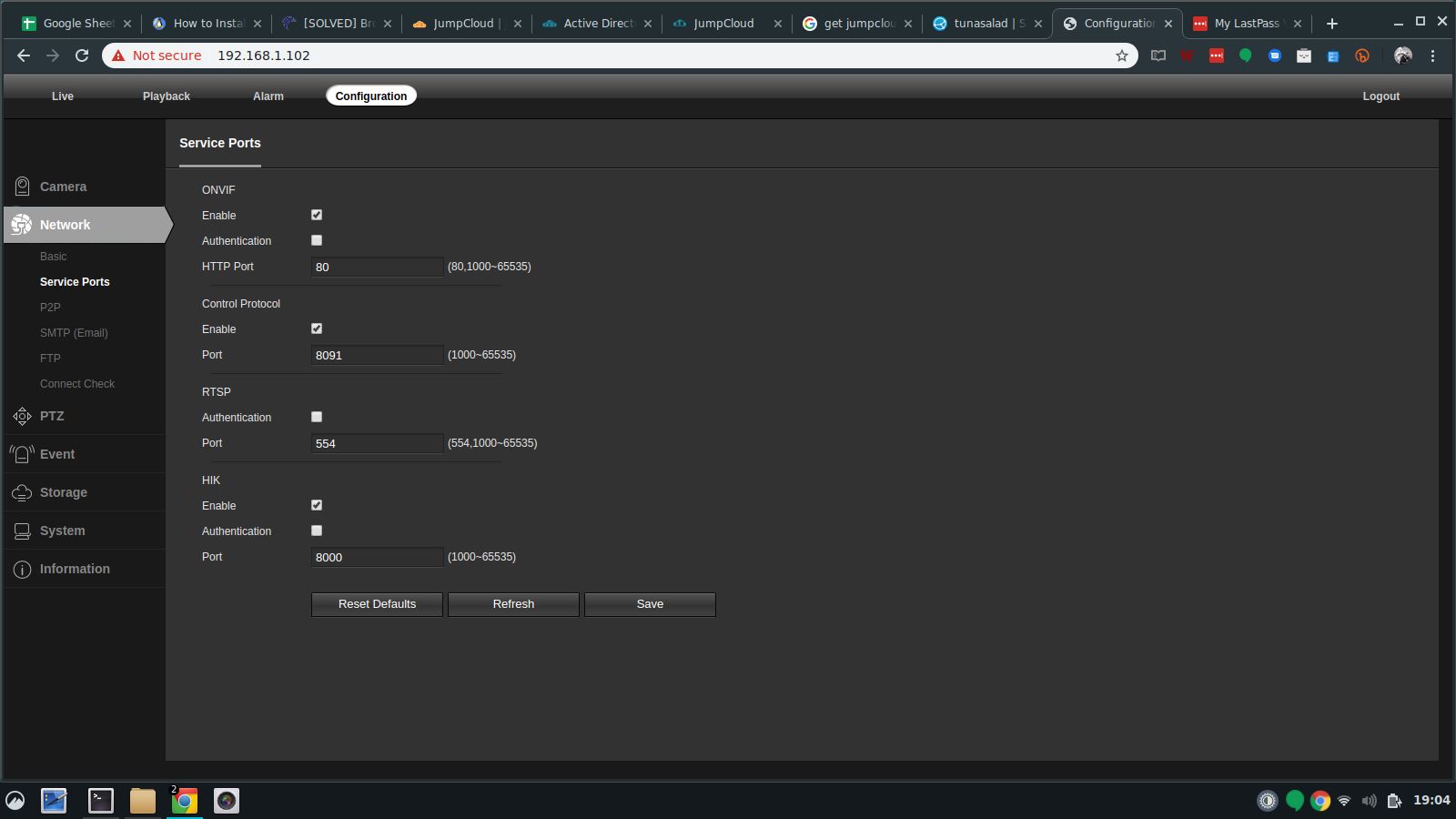
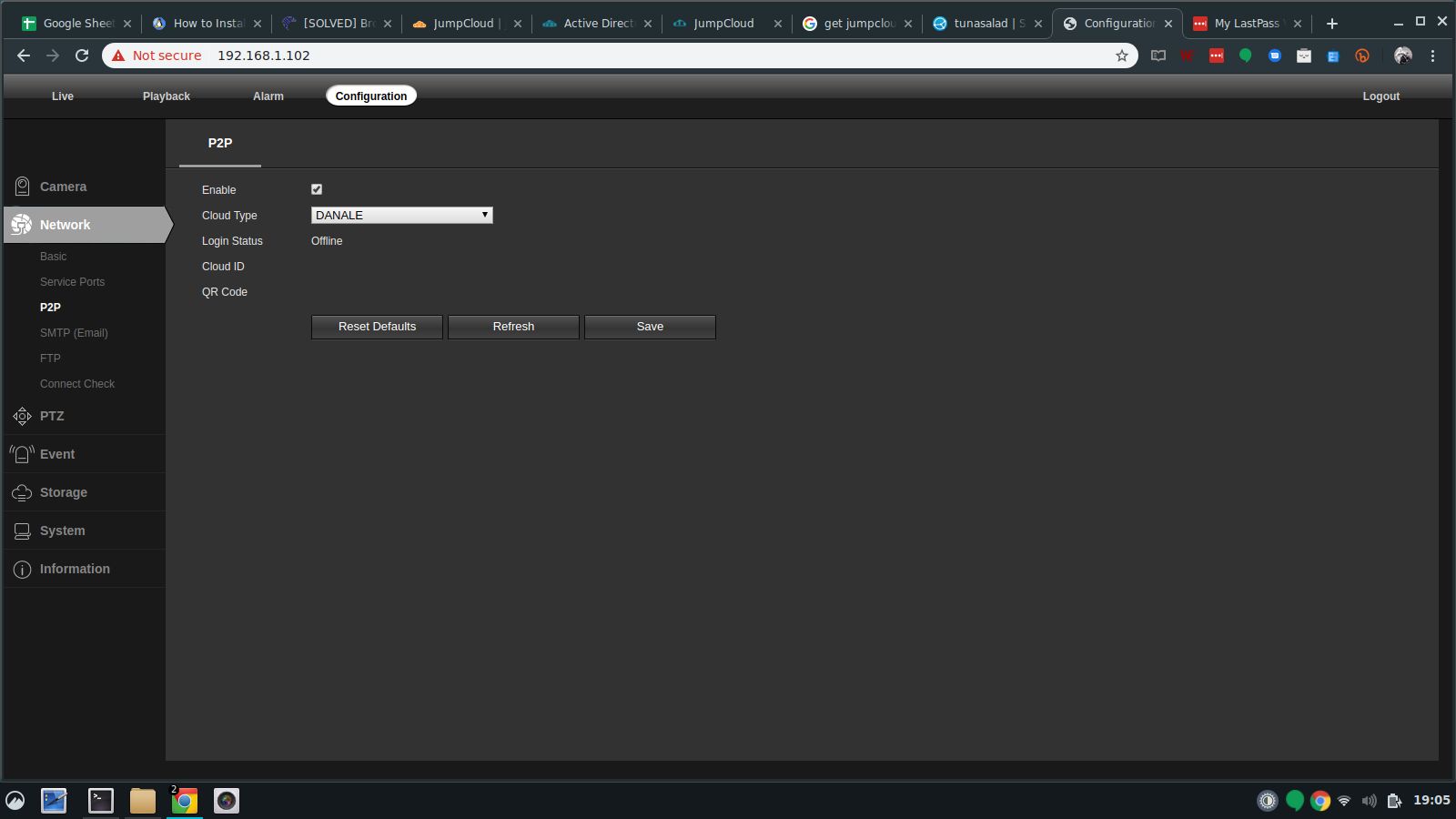

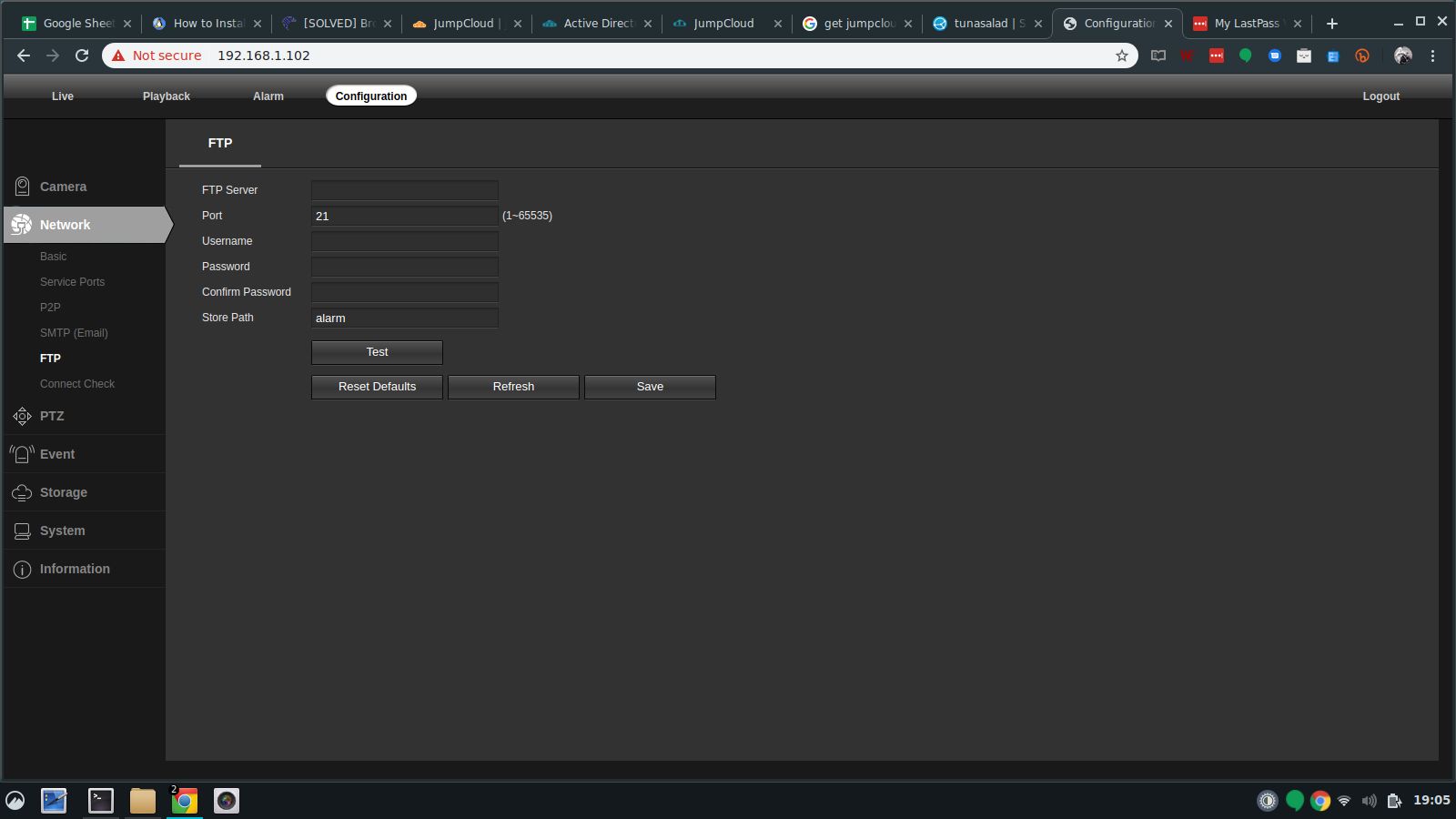

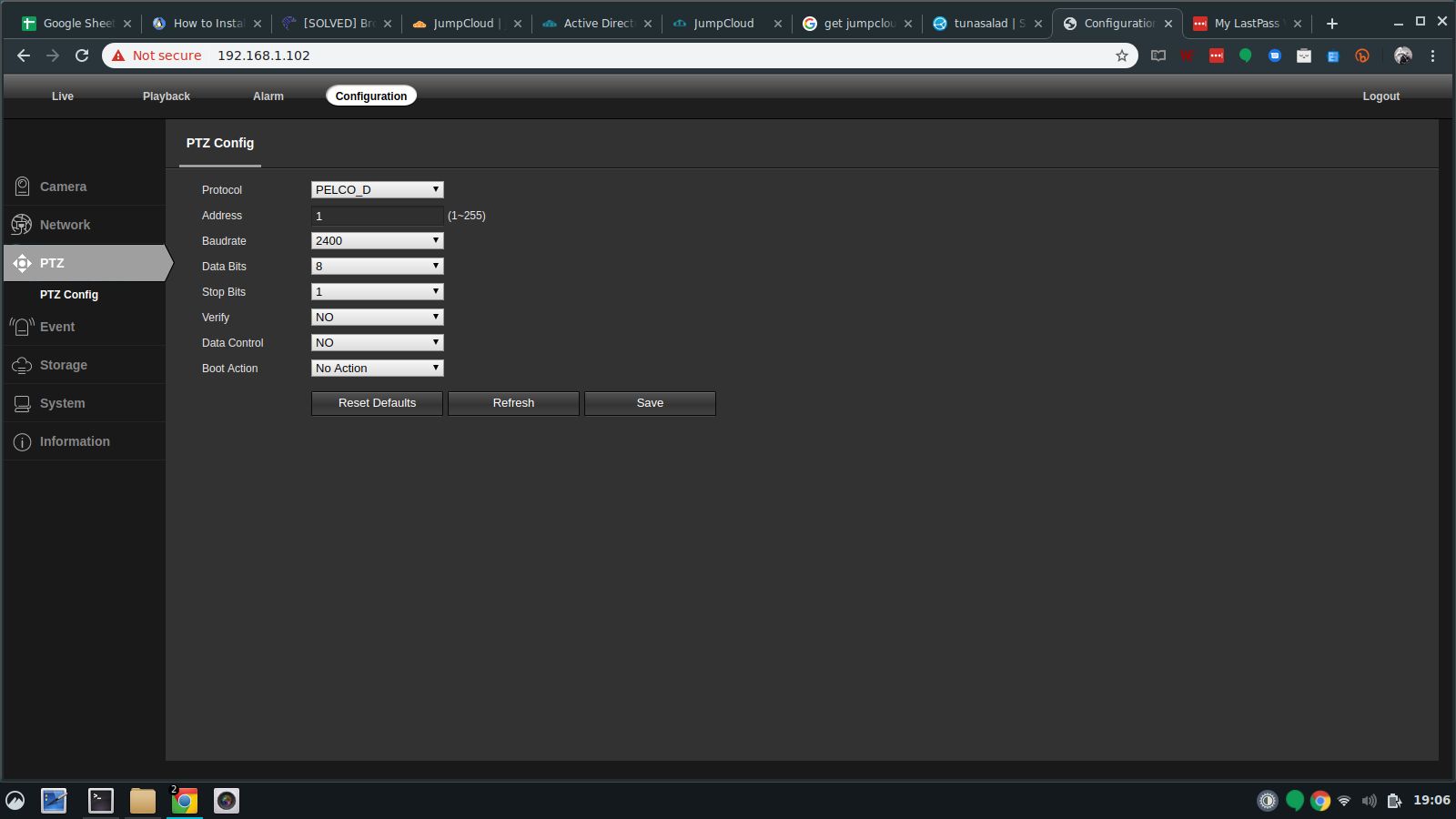

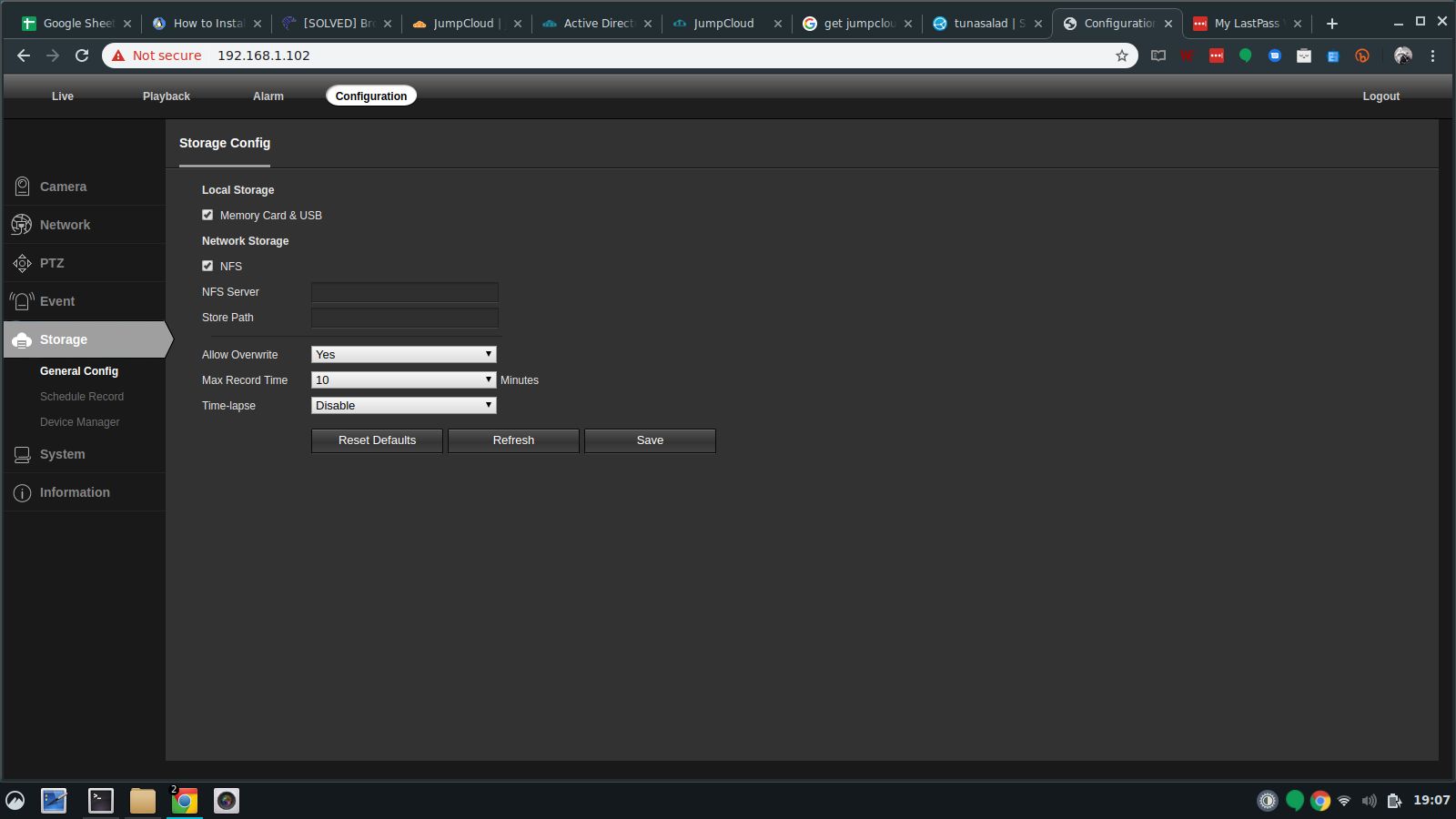

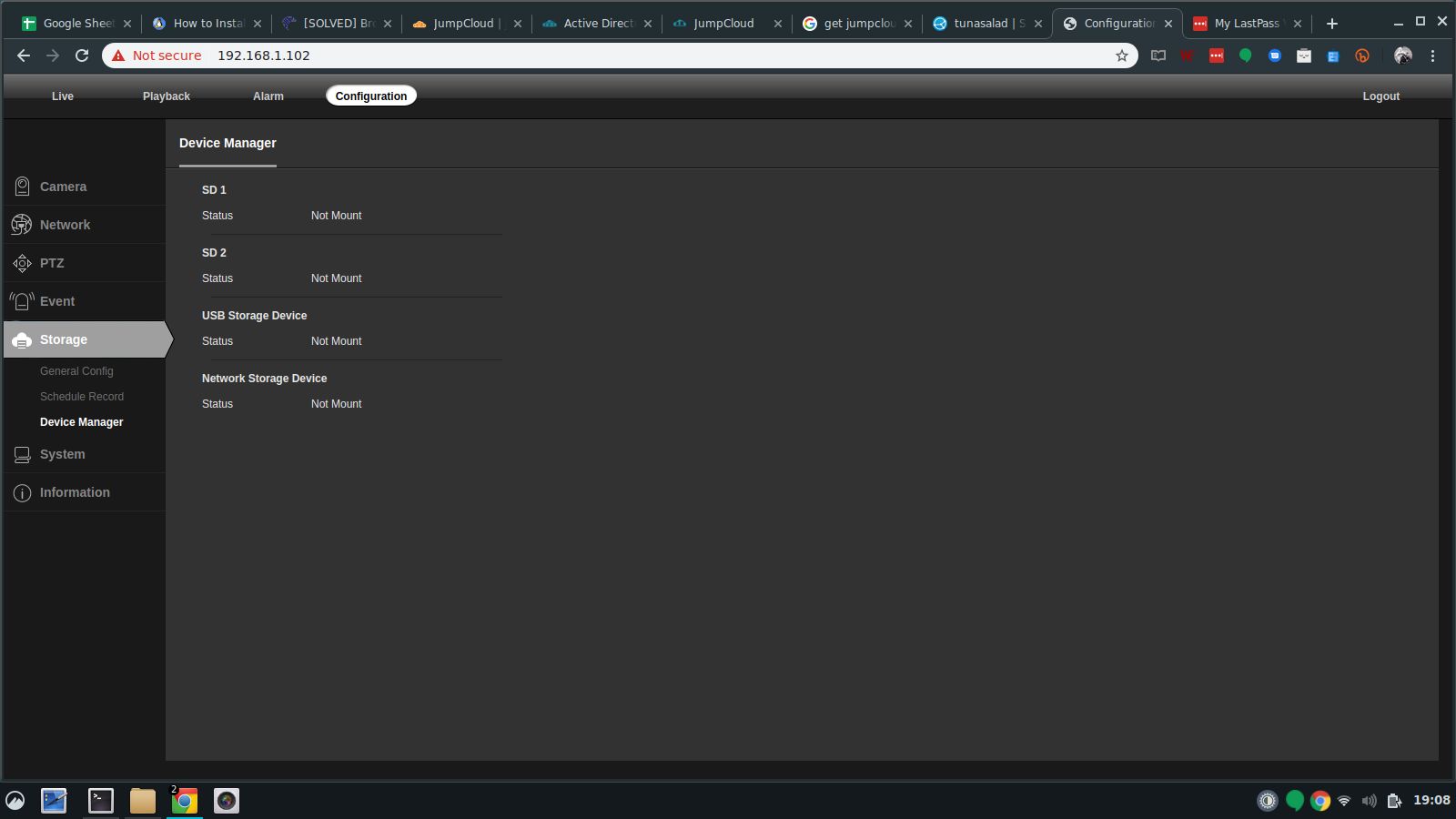
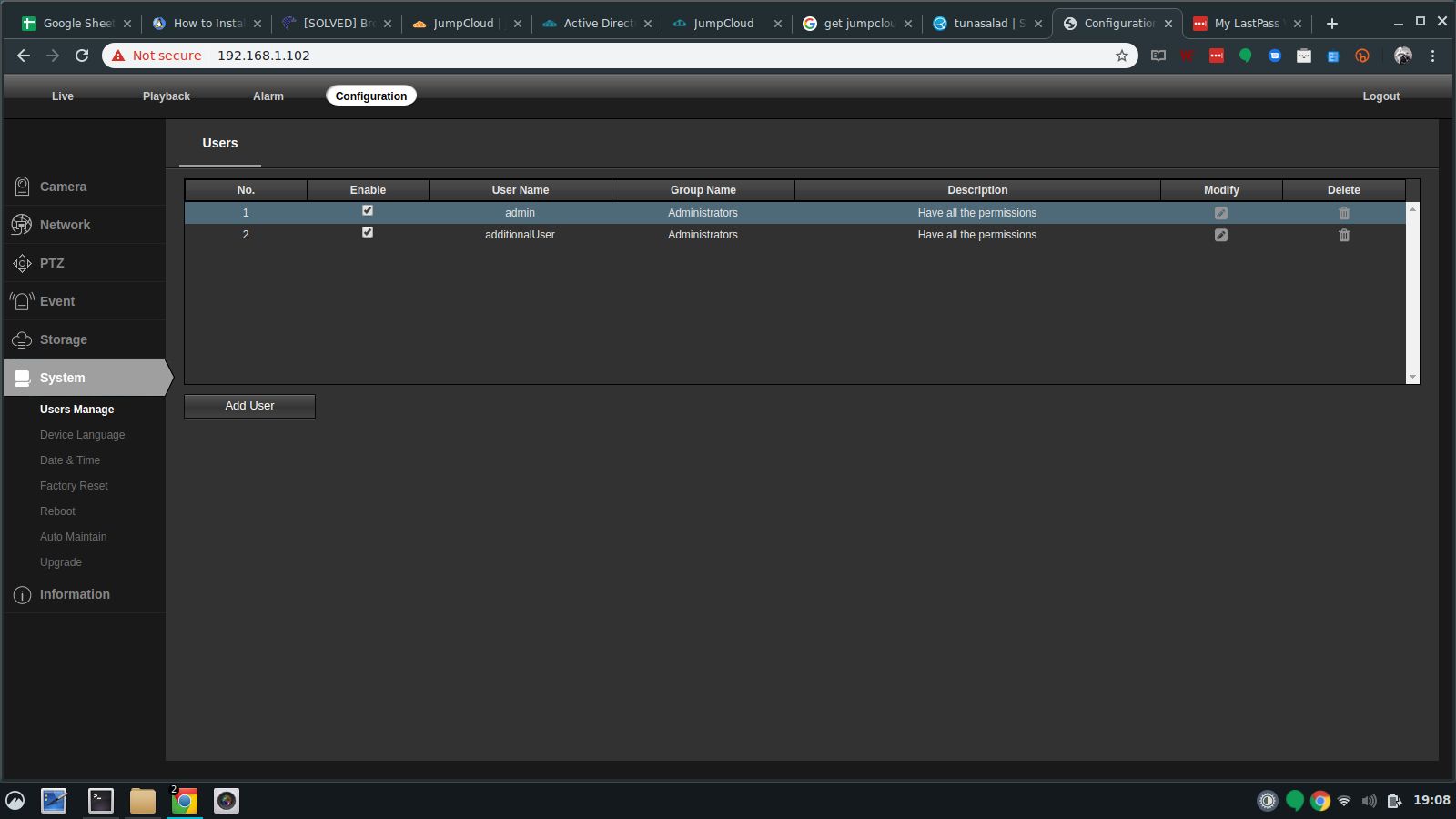

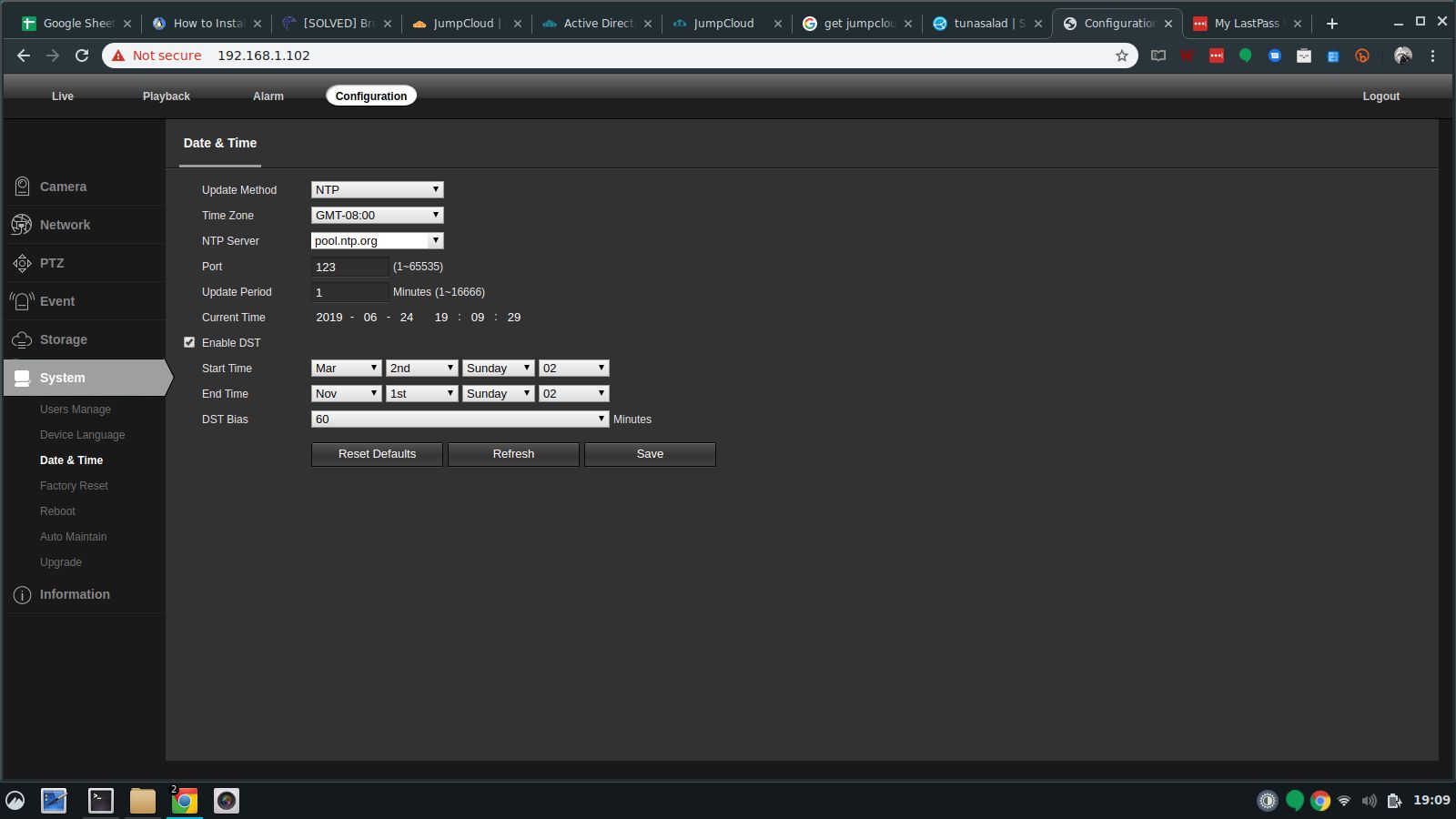
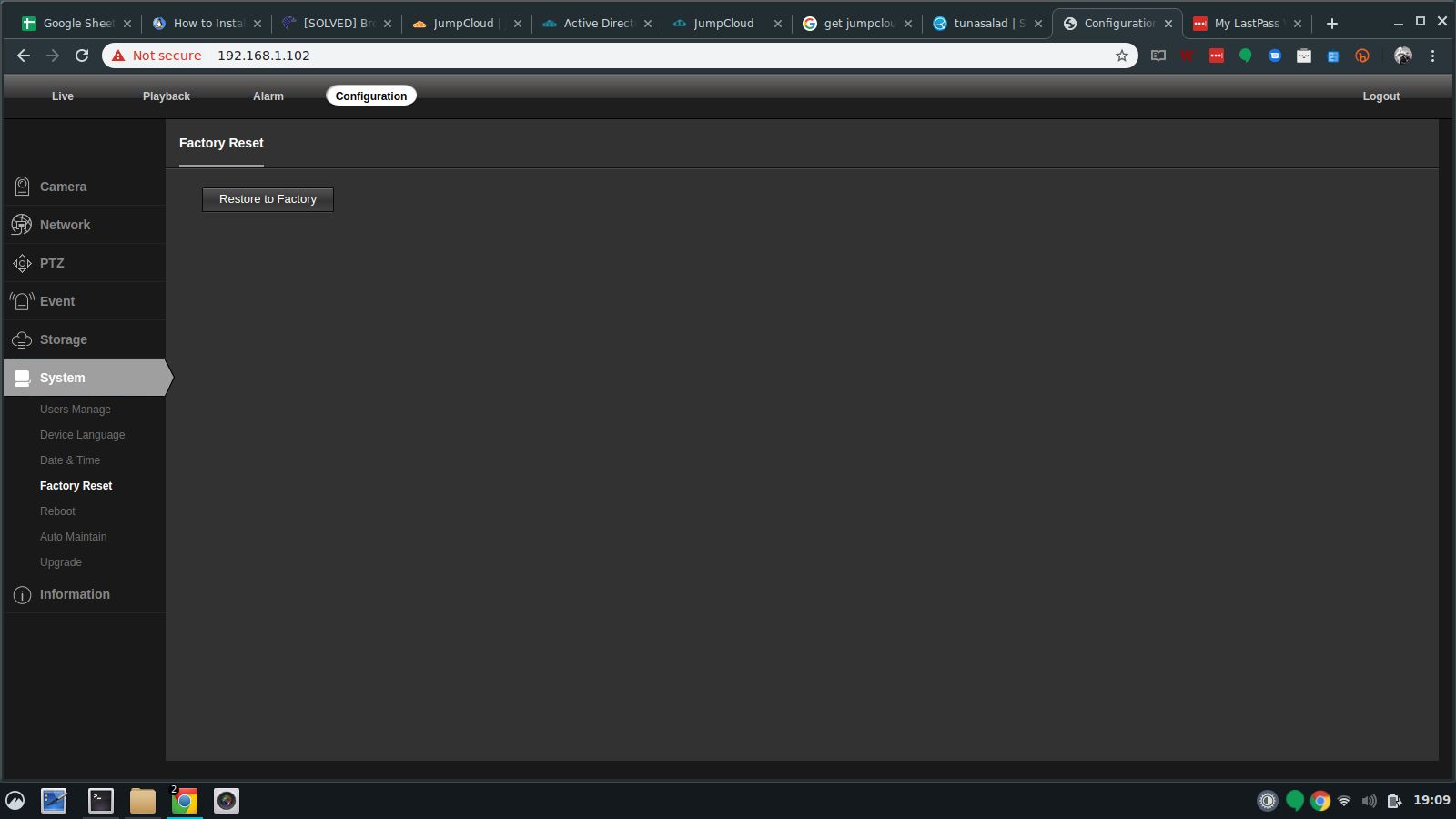
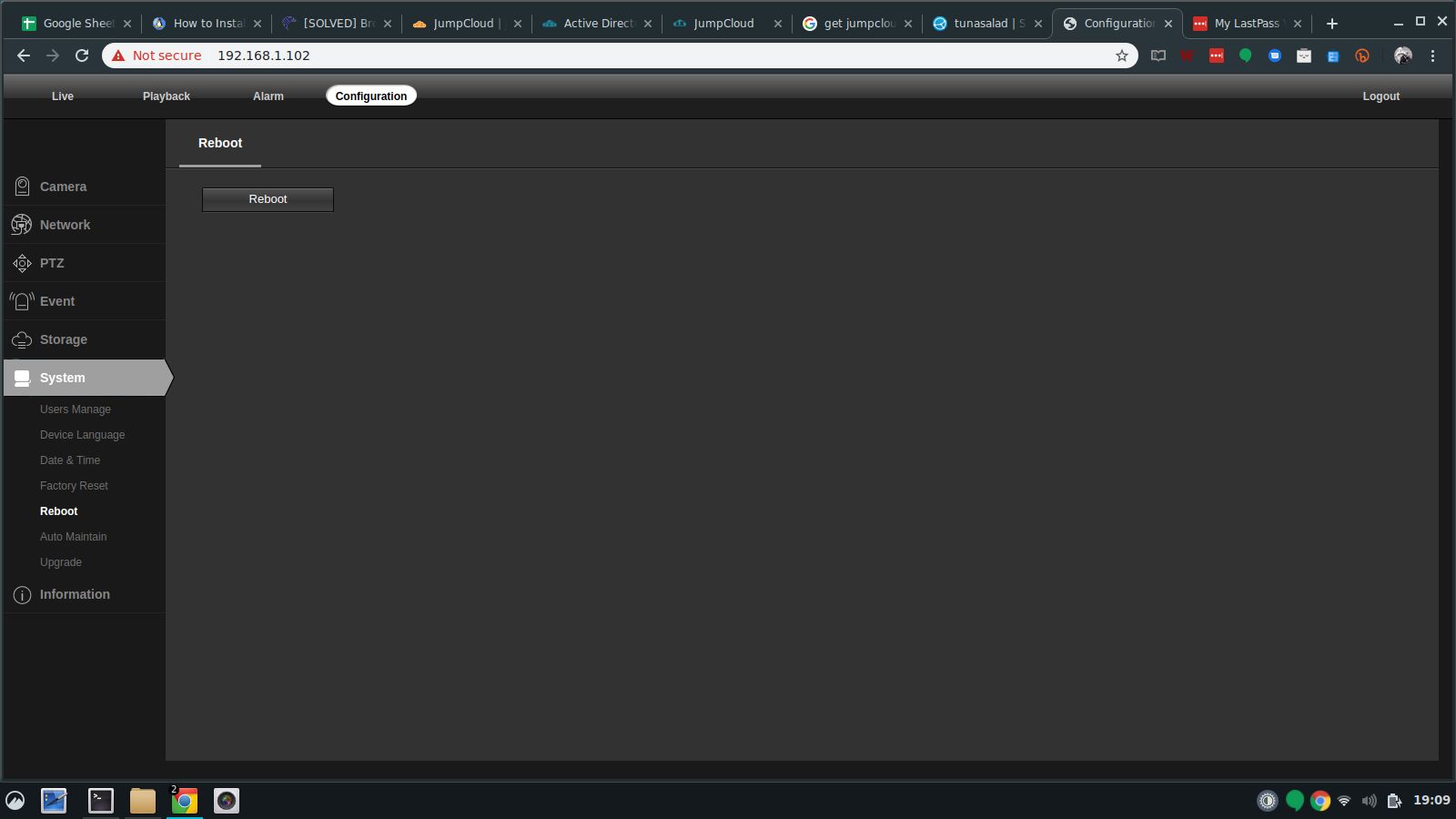
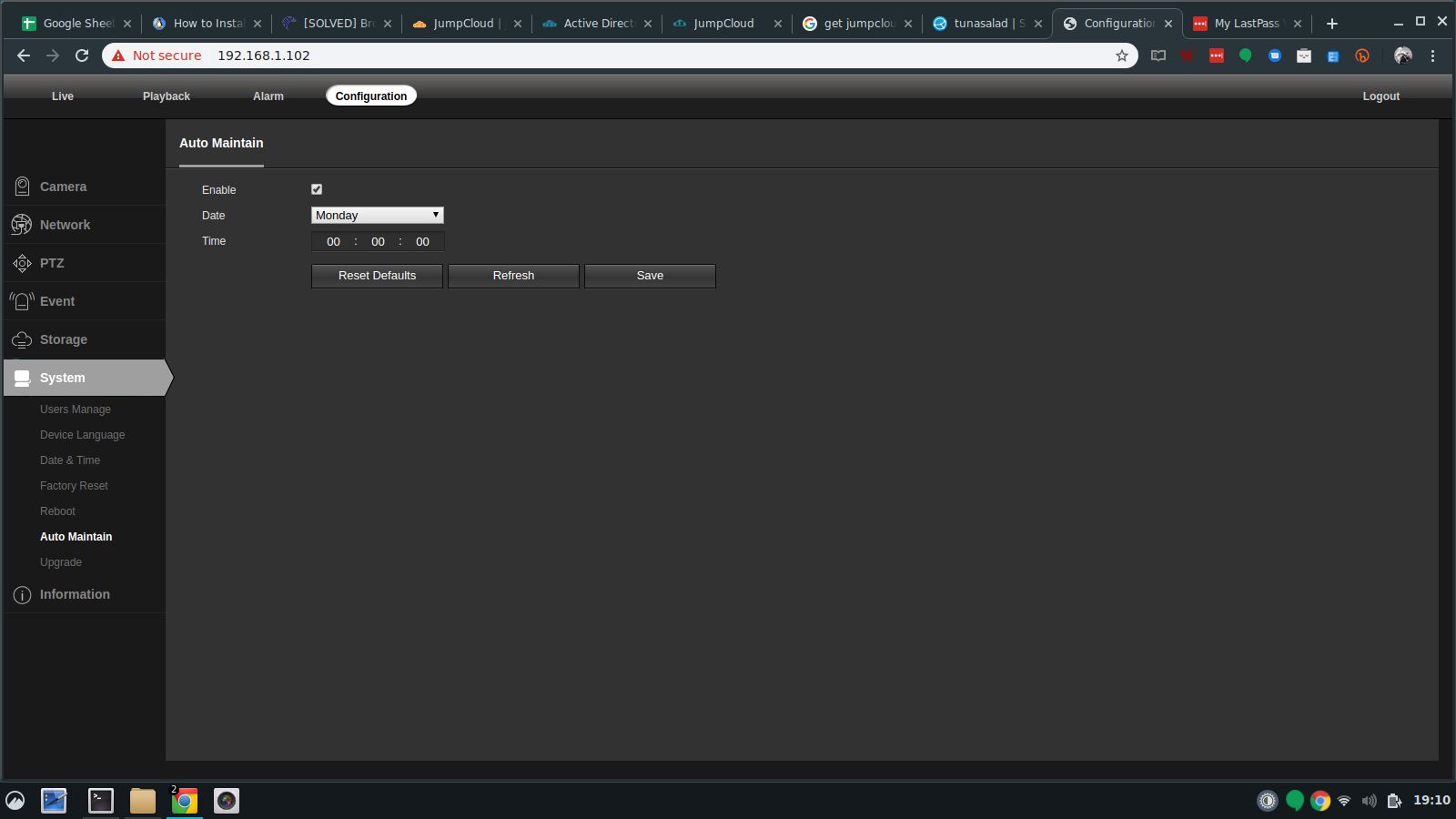
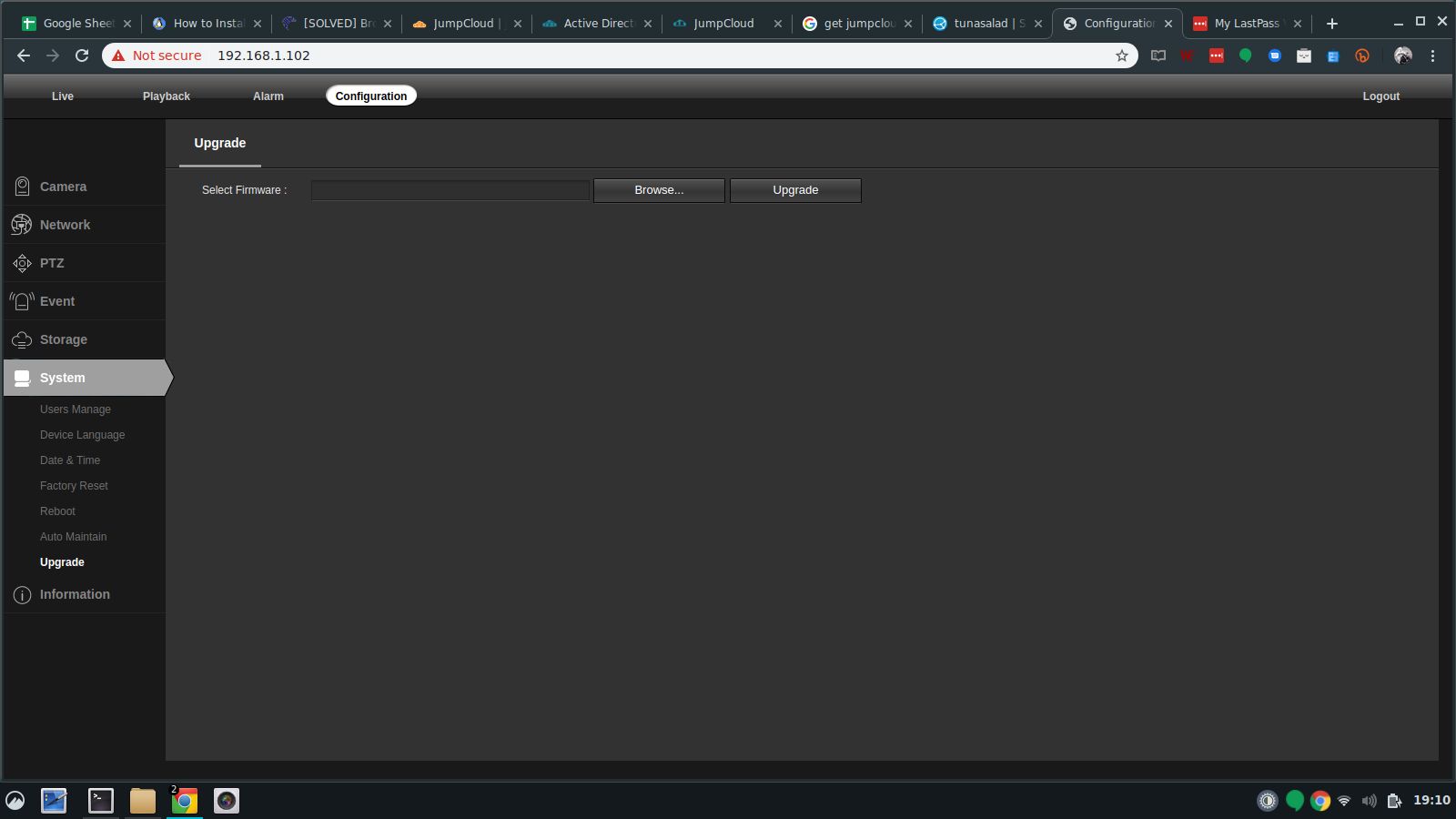
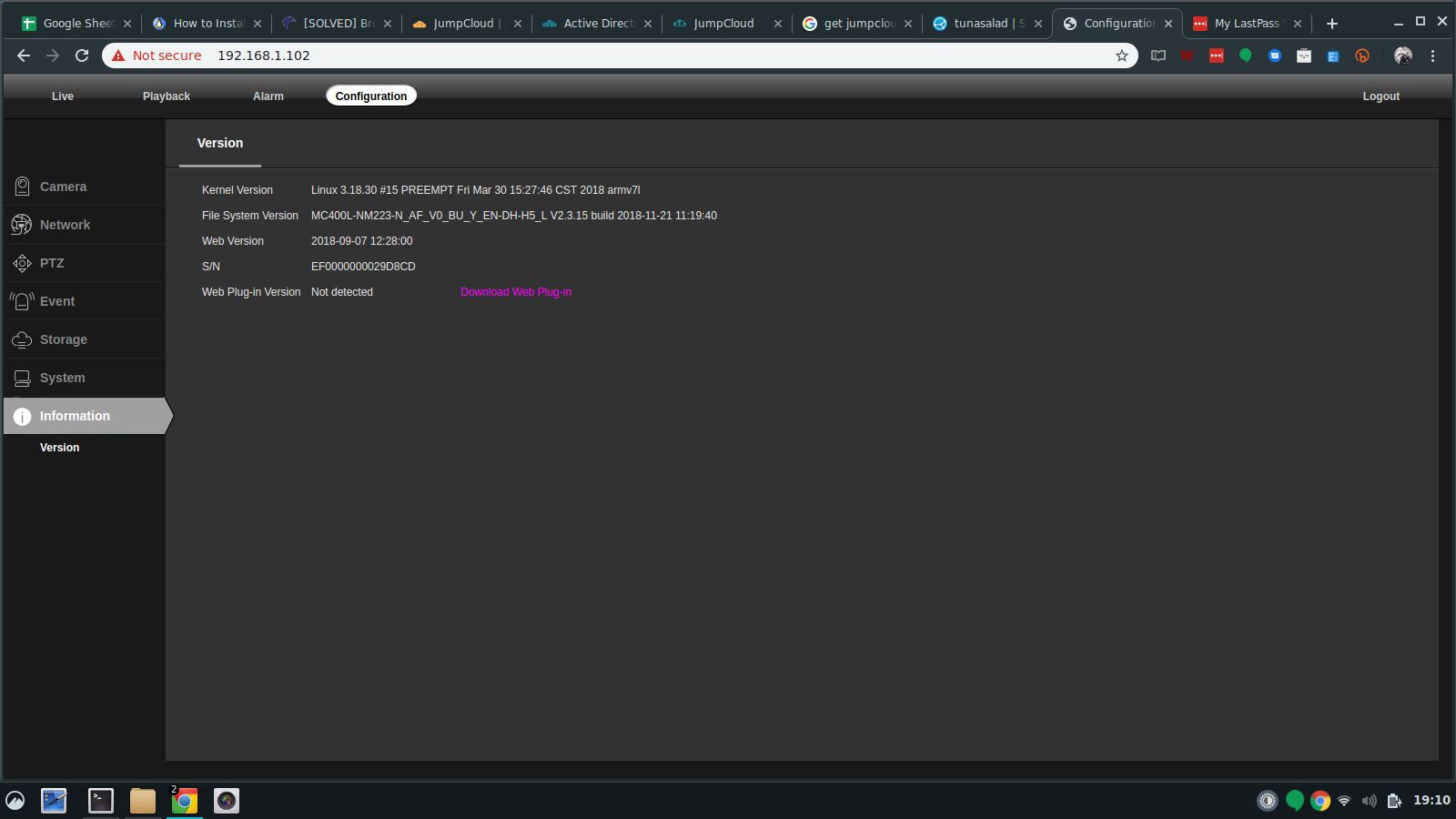

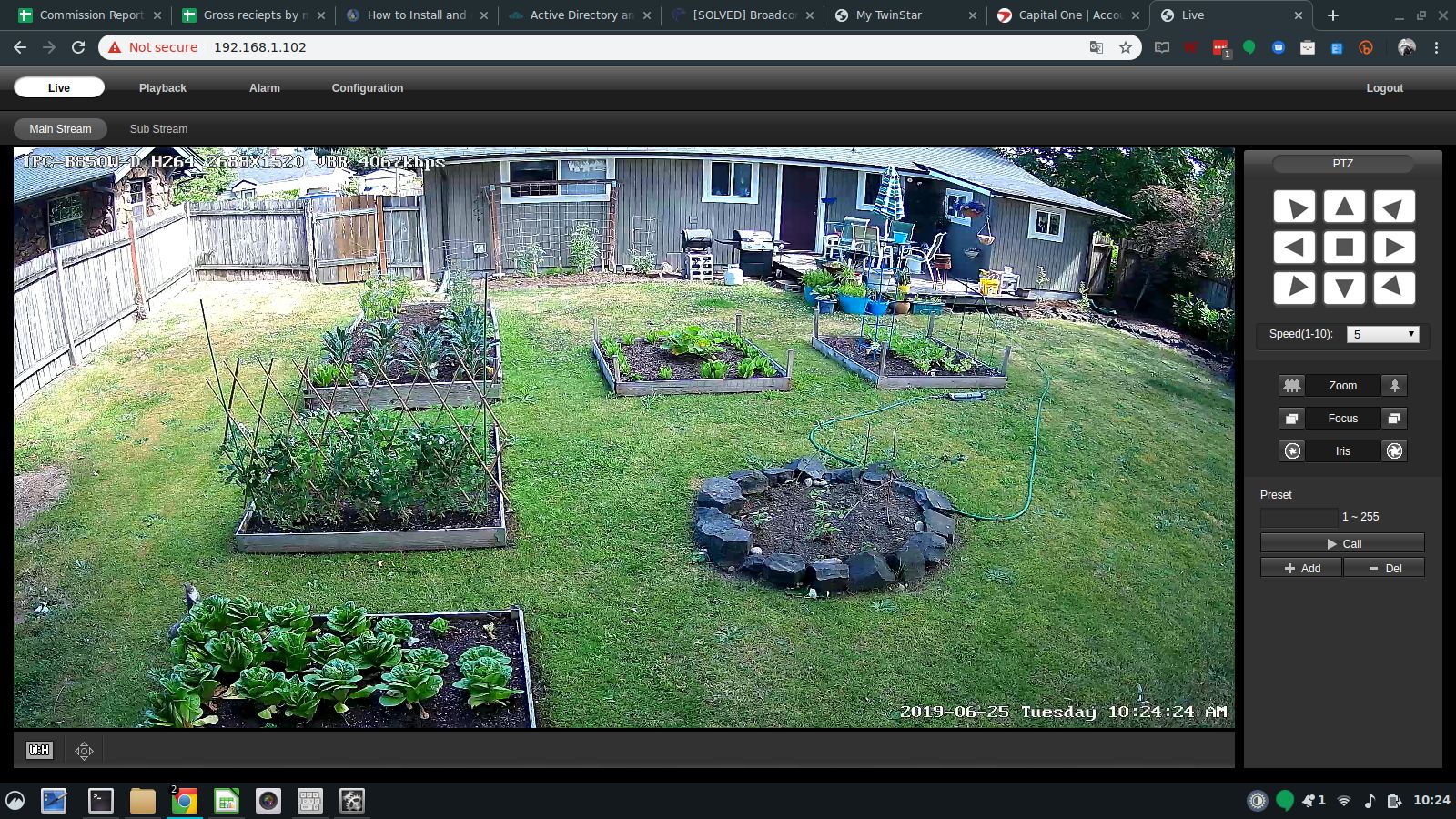
2 responses to “Musings about Home CCTV setup, and a review of Anpviz 5MP@15FPS POE security camera”
I have attempted to find any information about setting up the NFS storage for the Anpviz cameras, and your post here is the only thing I see anywhere that references it. Can you share a bit about how you managed to get it connect to your NFS server? I can not seem to make it connect ever, even with the log out/in as you suggested above, as well as a reboot.
Thanks for any response!
Hey, sorry I didn’t get back to you sooner. I got NFS working with a share from ZFS on OmniOS (Illumos, an open-source Solaris fork). It’s been a long time since I did it, so I don’t remember the exact config, but I do remember it being pretty tricky. I seem to remember I had to configure the share path, and then turn the NFS service switch off and then on again, hitting “save” between changes, but like I said, it’s been a while. I still have these cameras in operation, I’ll see if I can make time for some investigating…